As the seasons change and time moves on, so have a few of the species of birds here in Maine. With seasonal migration, many birds will move from one place to another to gain more advantages from the favorable conditions of their surroundings. This is quite an exciting time for bird watchers and photographers alike, for the opportunity to catch a glimpse of a variety of species of birds. The following photographs are of a few newcomers for the spring and summer, as well as a few year-round and familiar faces.
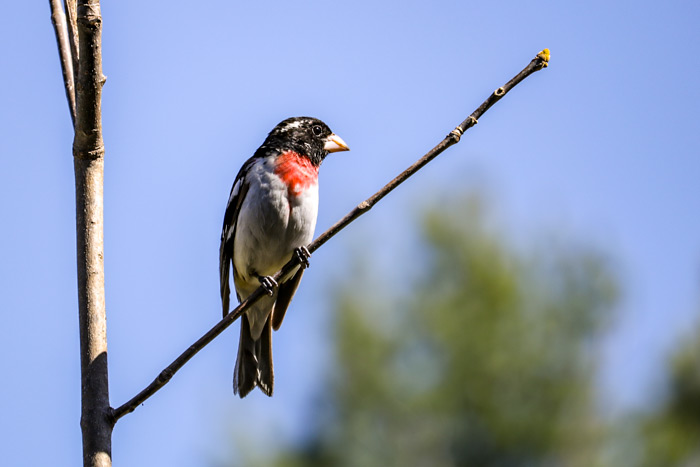
Male rose-breasted grosbeaks Pheucticus ludovicianus are stocky medium-sized songbirds. They are black and white with bright red extending from the throat down to the middle of the breast.
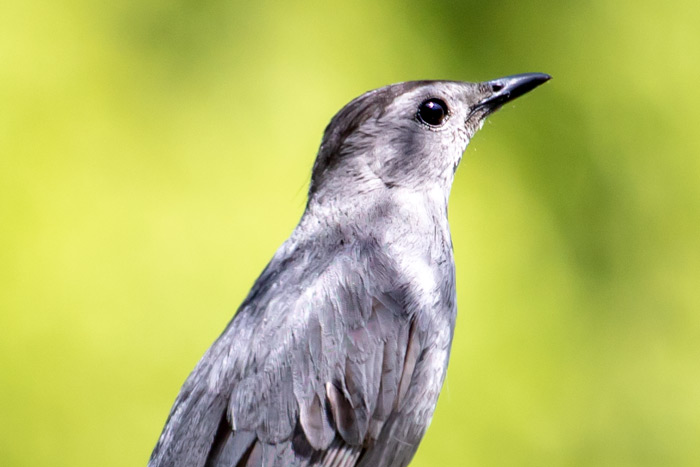
Gray catbirds Dumetella carolinensi are medium-sized songbirds that are a uniform slate gray color with a small black cap, blackish tail, and a rust color under the tail.
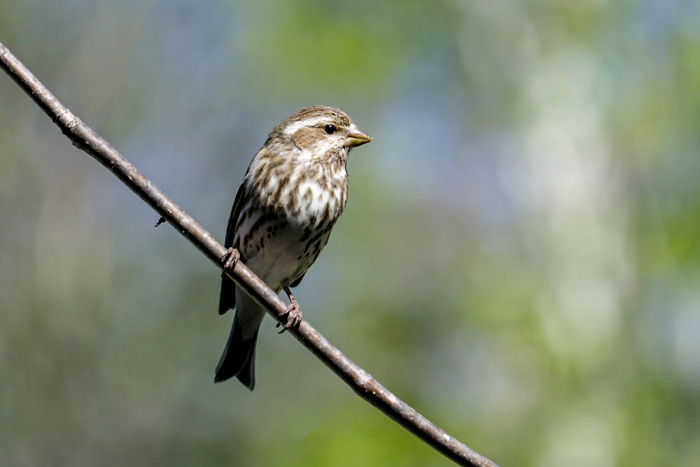
The purple finch Carpodacus purpureus is a stocky bird with a short tail, medium-length wings, and a stout bill. Males are a delicate pink-red on the head and breast, mixed with brown on the back and a cloudy white on the belly. Females have a coarsely streaked underside and strong facial markings consisting of a whitish eyestripe and a dark line running down the side of the throat.
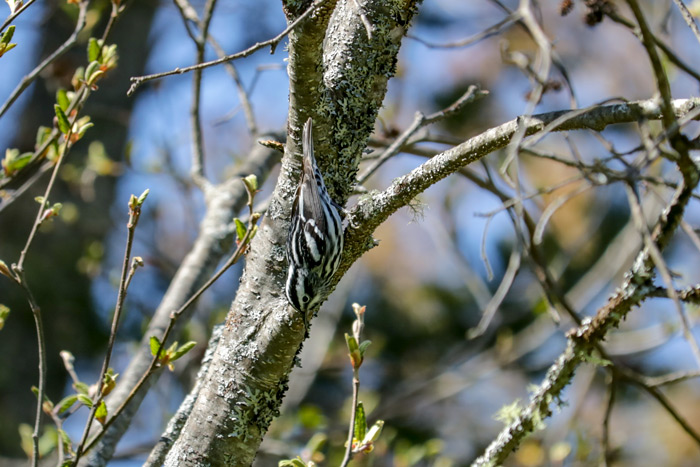
Black-and-white warblers Mniotilta varia are medium-sized warblers with a long, decurved bill. The head of these warblers often appears somewhat flat with a short neck. The wings are long, the tail is square and short and they also have long toes. These birds have bold stripes in black and white. The wings are highlighted with two wide, white wing bars. The coloring of the male has more obvious black streaking, especially on the underparts and the cheeks, and a black ear patch. The females are paler with a white throat, grayish ear patch, and a bit of a buff color on the flanks. The under-tail coverts also have distinctive large black spots.
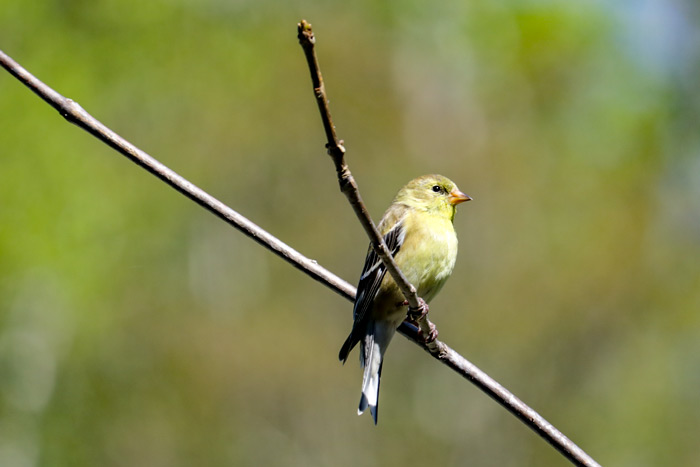
The American goldfinch Spinus tristis is a small finch with a short, conical bill and a small, head, long wings, and a short, notched tail.
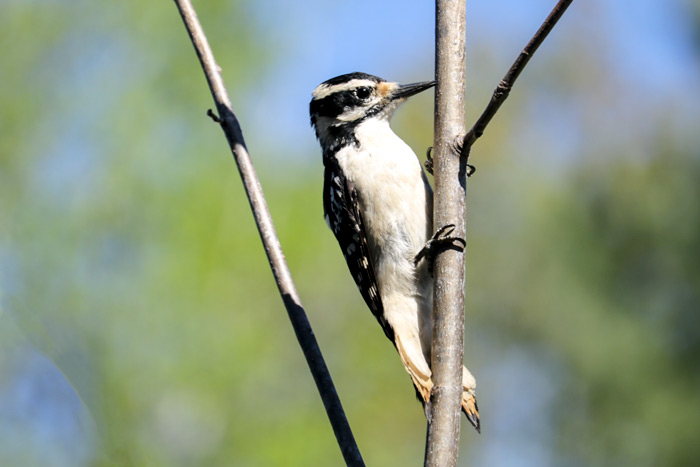
Hairy woodpeckers Leuconotopicus villosus are medium-sized with a somewhat square-shaped head. The bill is chisel-like and is close to the same length as the head. The long tail feathers are used as a fulcrum to lean against surfaces for feeding. Coloring includes contrasting black and white. The wings are black and checkered with white. The head has two white stripes and in the male, there is red toward the front of the head.
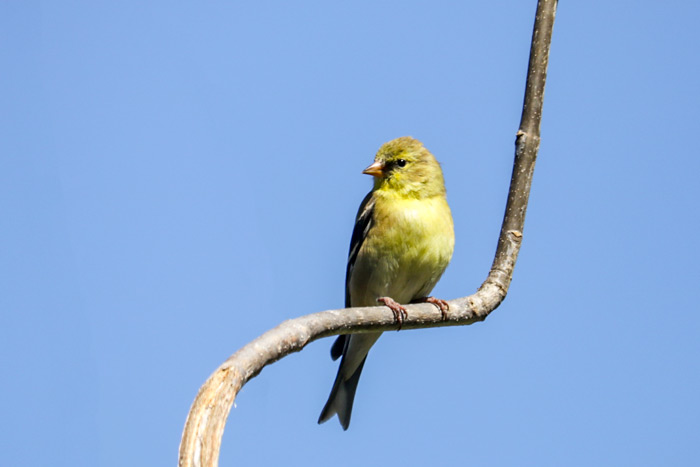
Adult male American goldfinches are bright yellow with a black forehead during the spring and early summer. They also have black wings with white markings and white patches, both above and beneath the tail. Adult females are duller yellow beneath and olive above. The winter birds are drab and unstreaked brown, with blackish wings and two pale wingbars.
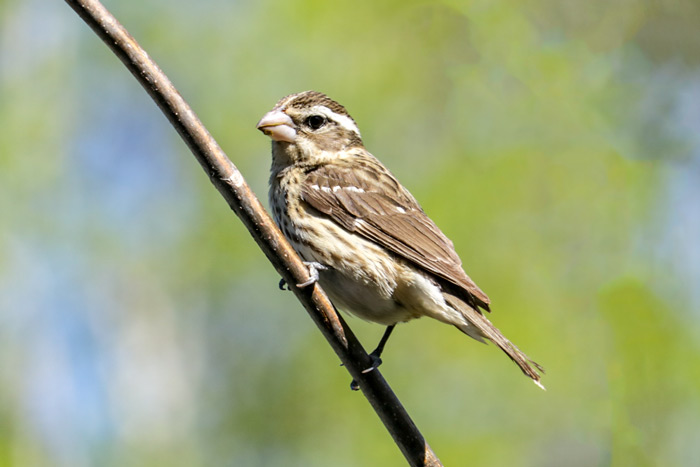
Female rose-breasted grosbeaks are heavily streaked above and below, with a white eyebrow stripe and a pale bill.
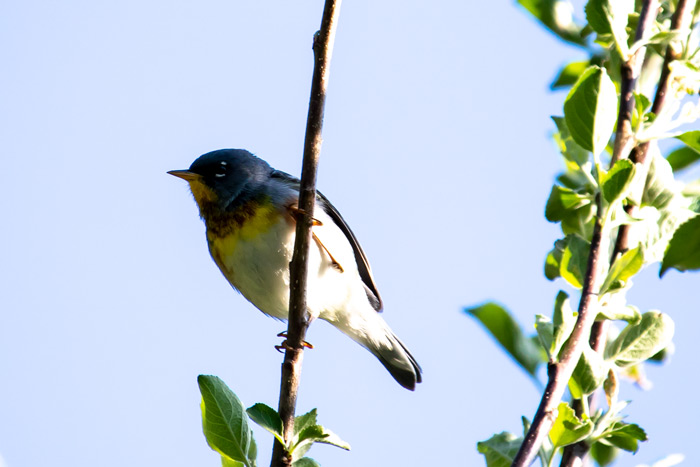
Northern parulas Setophaga americana are small New World wood-warblers with a short tail and a thin, pointy bill. These warblers are blue-gray above with a greenish back patch and two white wing bars. The breast is yellow and the belly is white. During the summer, males have rufous breast bands and prominent eye crescents. At the end of their breeding season, males will begin to molt into a duller version. The females are similar to the males, but duller and lack breast bands.
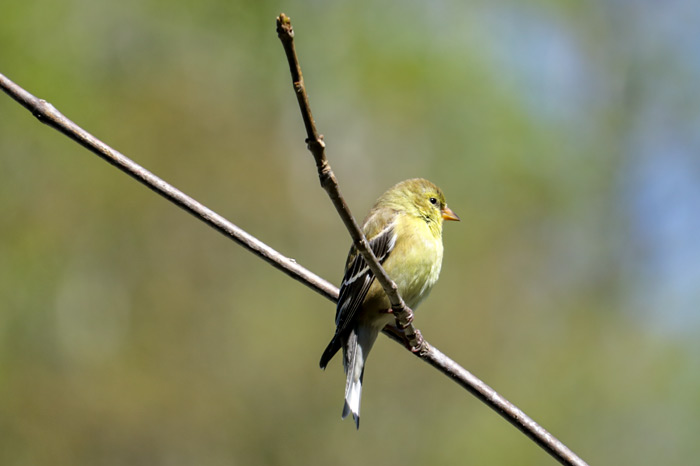
The main natural habitat of the American goldfinch are weedy fields and floodplains, where plants such as thistles and asters are commonly found.
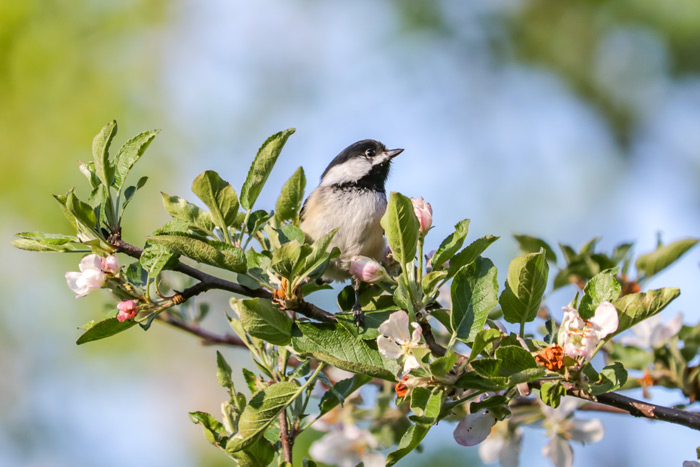
The black-capped chickadee Poecile atricapillus is a small and compact bird with a small beak. Coloring includes a black streak that runs from the beak to the neck over the top of the head. There is also a distinctive black bib on the underside of the neck, with white streaks down the sides of the face. They have gray above and below ranges in color from white to light rust-brown. The feathers also have white edges.
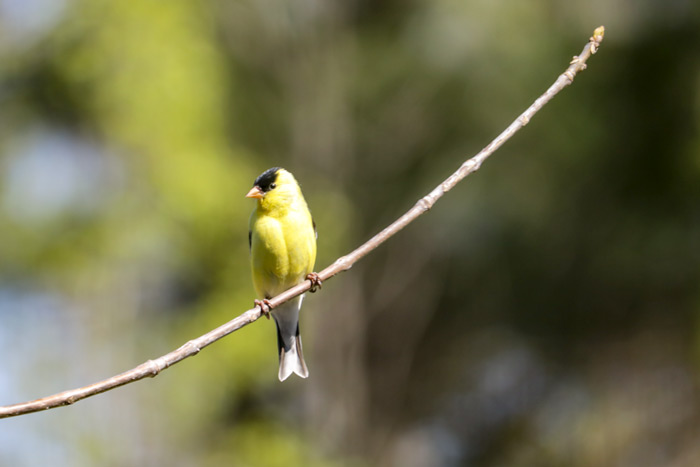
American goldfinches are also found in cultivated areas, roadsides, orchards, and backyards.
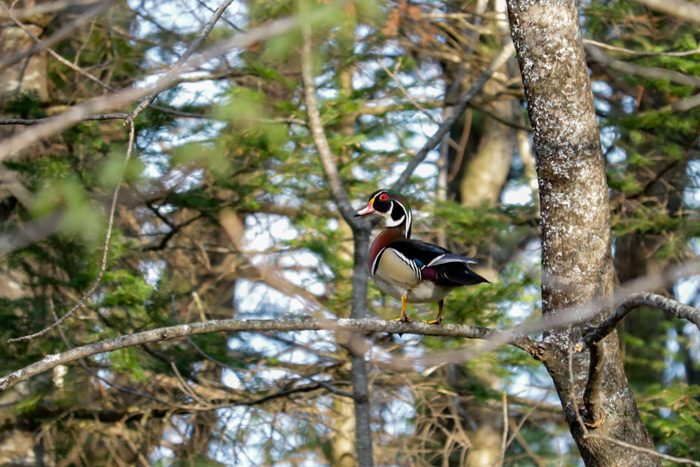
Unlike most waterfowl, wood ducks Aix sponsa will perch and nest in trees and are comfortable flying through woods. Males have a glossy green head cut with white stripes, a chestnut-colored breast, and buffy sides. In low or harsh light, they will appear dark overall with paler sides. In the late summer, males will lose their pale sides and bold stripes but retain their bright eye and bill.
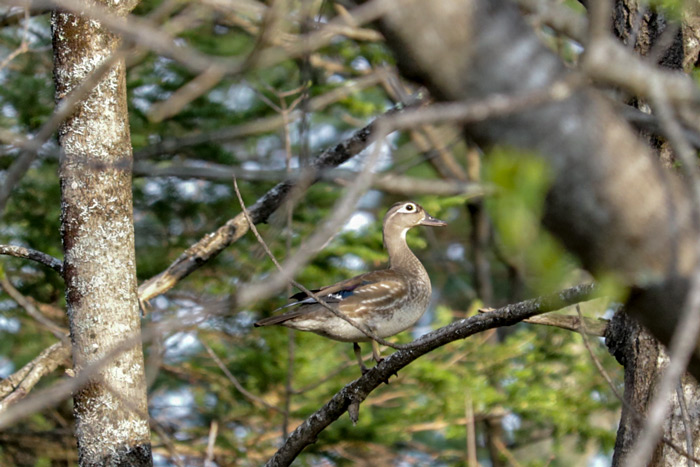
The female wood duck is gray-brown in color with a white-speckled breast. The juveniles are very similar to females.
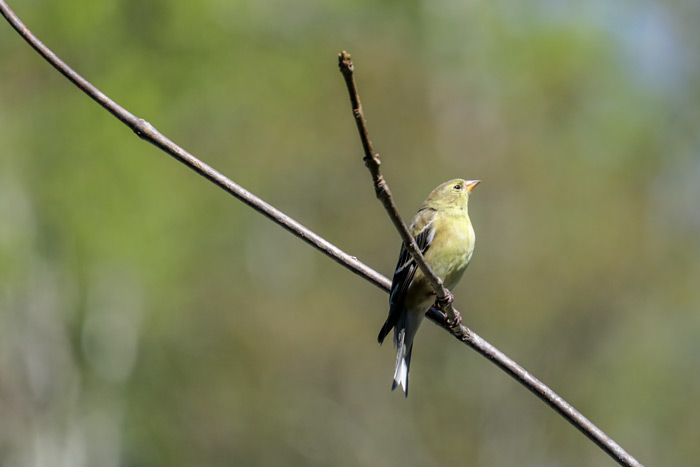
The American goldfinch is migratory, ranging from mid-Alberta to North Carolina during the breeding season and from just south of the Canada–United States border to Mexico during the winter.
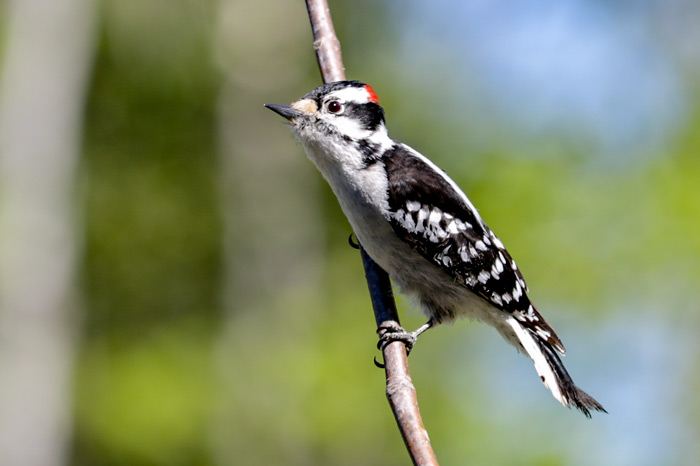
Downy woodpeckers Picoides pubescens have a straight, chisel-like bill, blocky head, and wide shoulders. These woodpeckers give a checkered black-and-white impression. The black upper parts are checked with white on the wings, the head is striped and the back has a broad white stripe down the center. The outer tail feathers are typically white with a few black spots. Males have a small red patch on the back of the head.
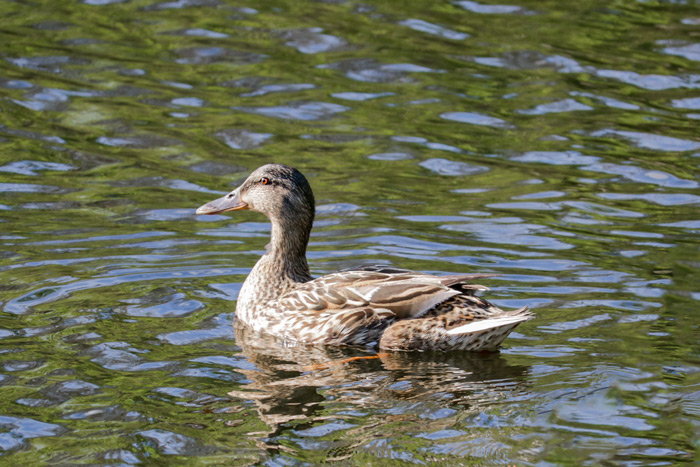
Male mallards Anas platyrhynchos have a dark, iridescent-green head and a bright yellow bill. The gray body is situated between a brown breast and black rear. Female Mallard Ducks are mostly brown in color with dark, coarse streaks and dark eye stripe. The bill is an orange-brown color and both sexes have distinct iridescent purple-blue speculum feathers edged with white.
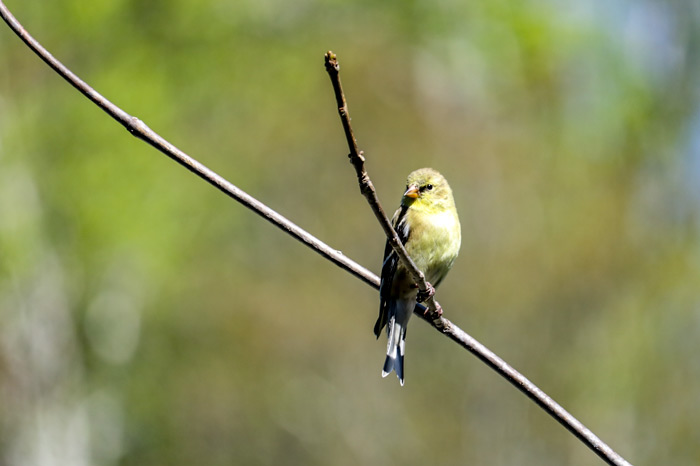
American goldfinches are very active and acrobatic finches that cling to weeds and seed socks.
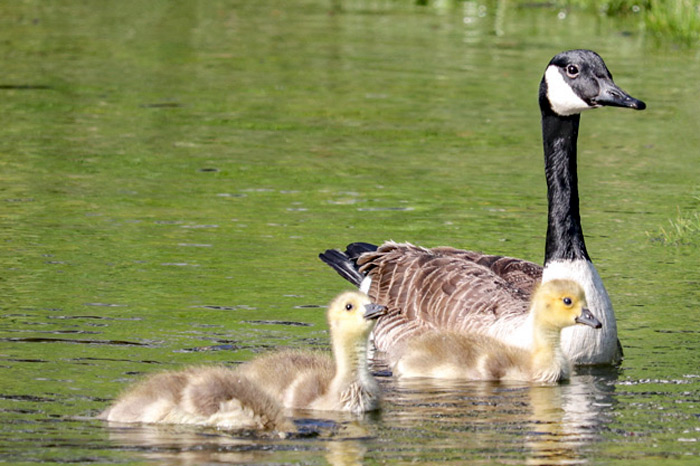
Canada geese Branta canadensis are large waterbirds with a long neck, large body, large webbed feet, and a wide flat bill. They have black heads with white cheeks and chinstrap, black neck, tan breast, and brown back. Soon after hatching, Canada Goslings will begin to peck at small objects and spend most of their time sleeping and eating. Goslings will often remain with their parents for their entire first year.
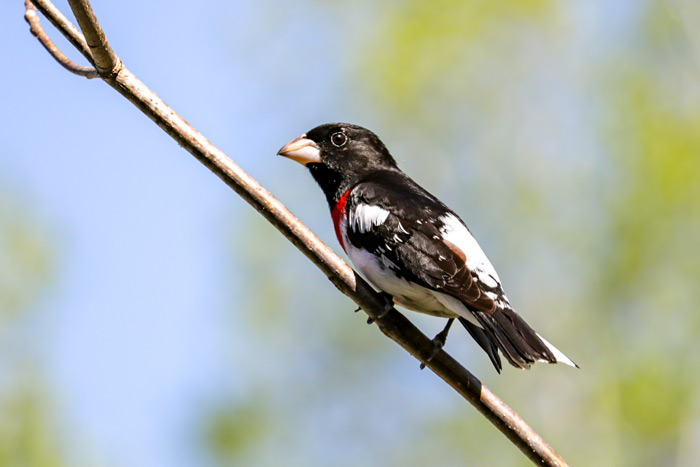
During migration, rose-breasted grosbeaks will frequent fruit trees to aid in fueling their flights to Central and South America.

The indigo bunting Passerina cyanea is a small and stocky songbird, around the size of a small sparrow. The beak is short and conical and the tails are short and rounded. During the breeding season, adult males are a bright blue and only the head is indigo. Females are brown above and a lighter brown below. Immature males resemble the female in color, perhaps with hints of blue on the tail and shoulders and darker streaks on the underside.
Leave a Reply